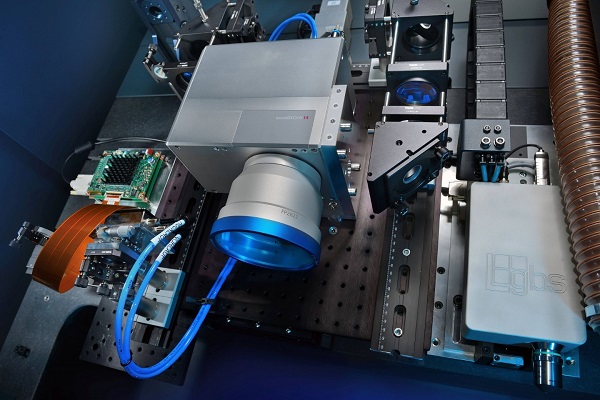Full company details
Hamamatsu Corporation
Sub. of Hamamatsu Photonics K.K.
 360 Foothill Rd.
360 Foothill Rd.
Bridgewater, NJ 08807
United States
Phone: +1 908-231-0960
Fax: +1 908-231-1539
Hamamatsu, Fraunhofer Develop Joint Application Lab
Photonics Spectra
Nov 2022Together with Hamamatsu, the Fraunhofer Institute for Laser Technology (Fraunhofer ILT) launched an application lab for advanced laser material processing with ultrashort pulsed (USP) laser radiation, located in Aachen, Germany. The partners jointly developed an industrial processing spatial light modulator (SLM) head that can use customized, dynamic beam shaping combined with large laser average output powers for a wide range of applications.
The new SLM from Hamamatsu can be operated up to 150 W of average output power, according to Fraunhofer ILT.
To increase the economic benefit of USP processing, research uses different hardware approaches to address the handing of increased high average laser powers with more than 100 W, which upscales processing speeds and lowers unit costs. One popular method to implement these large laser powers is to split the high-energy radiation into many individual beams. This approach is used industrially, particularly for 2D laser material processing or for the generation of periodic patterns such as filters, according to Fraunhofer ILT.
Phase masks are used to generate a parallelized beam patterns with a large number of partial beams from one incident beam. This works dynamically with SLMs or statically with diffractive optical elements (DOEs) made of glass. SLMs can dynamically change the phase pattern — and, as a result, also the beam matrix — whereas static DOEs can withstand higher average powers, according to the institute.

In the ‘Joint Application Lab’ of Hamamatsu and Fraunhofer ILT, manufacturing processes can be investigated using a scanner-based process head with an integrated high-power SLM. Courtesy of Fraunhofer ILT.
SLMs are particularly suitable for developing manufacturing processes that use USP laser radiation since the beam properties can be easily adapted and tailored. This applies to both the beam profile as well as the arrangement of the individual beams within a pattern. In series production, SLMs are advantageous if beam patterns must be changed dynamically during the process. If the beam parameters are known and static, DOEs are the better choice due to their insensitivity.
Now, in the joint application lab, an industry-ready prototype is set for the development of manufacturing processes, according to Fraunhofer ILT. This includes a scanner-based process head in which Hamamatsu’s high-power SLM is integrated. The head is integrated into a 3-axis machine with a 150-W USP laser. The SLM has been optimized for high average power, and though it is currently being introduced to the market, in Aachen the system with the new SLM has been used for various processes and applications since May.
The team of Hamamatsu and Fraunhofer ILT investigated the surface and volume ablation with different beam profiles and focus diameters. The flexible liquid modulator eliminates the need for tool changes. The heat distribution in the workpiece has become increasingly important when large average laser powers are applied and USP processes are scaled in speed and efficiency. With additional collaborators, Fraunhofer ILT simulated the processes completely. In this way, the energy distribution and, thus, the heat input within a parallelized beam distribution can be optimized.
Hamamatsu received funding from the Japanese government to establish the new laboratory under the Cross-Ministerial Strategic Innovation Promotion program.